STORY
How it all Started
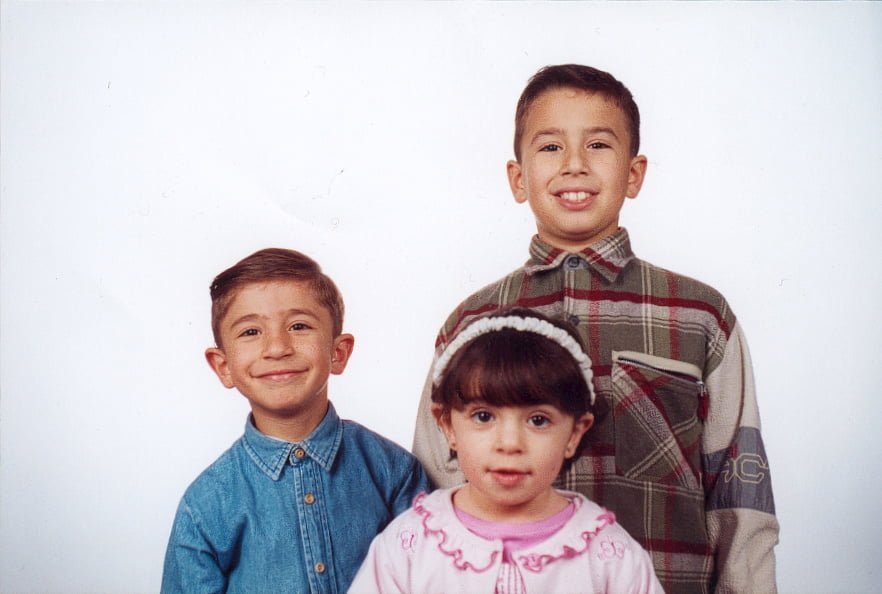
Bassem Zawdeh, was born in 1994, in the Lebanese city of Tripoli. He grew up in an artistic family. His father, Majed and grandfather Sadek were medical doctors who inherited an artistic passion. Both, Majed and Sadek, used art as something they might enjoy every once in a while. Bassem's father tried various art styles, from oil painting to sketching and sculpting. He exhibited his work in their home, only their visitors see the artworks. During his early years, Bassem used to watch his father paint and started practicing art at a young age.
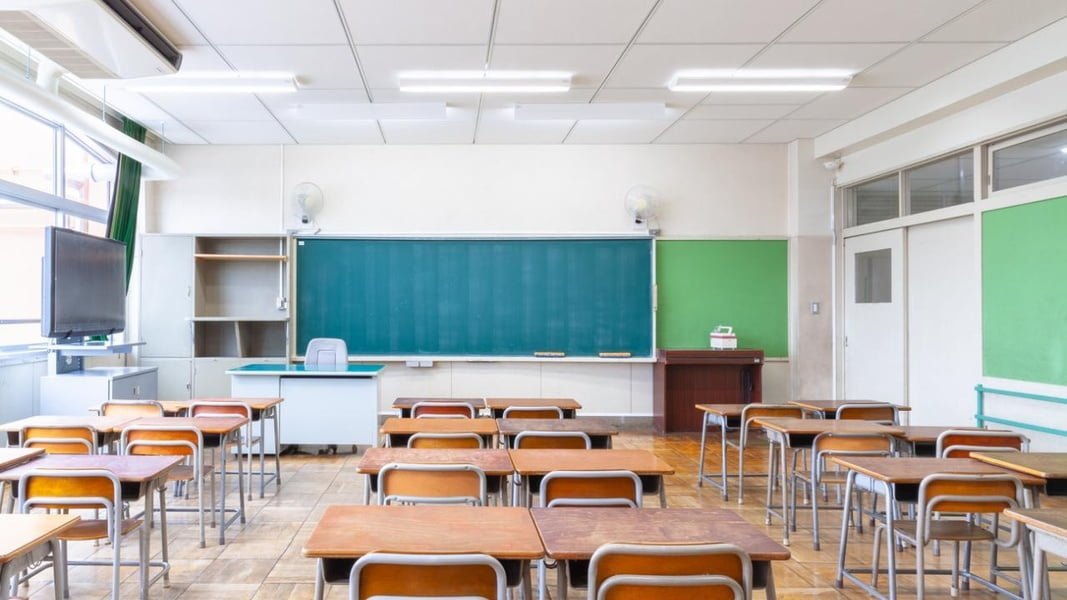
In 2009, a young fifteen years old boy was sitting in the back of a boring class at school when an idea of drawing symmetrical shapes on the cover of one of his notebooks came up.
The shapes he drew were simple and influenced by islamic art. Since He inherited an artistic soul, he kept drawing these shapes until he reached eighteen. During these three years, he filled his free time drawing symmetrical shapes on books while using the available grid.
Each person seeing this young man drawing will recommend him to consider studying architecture.
He decided to apply for architecture school without knowing what architecture does.

Bassem started studying architectural enginneering at Beirut Arab University. At the end of the first semester, Bassem knew what architecture really is.
He was a 17 years old passionate young man and the youngest student in the academic year 2011-2012.
He continued having fun with his patterns, drawing them literally everywhere.
Bassem enjoyed architecture and couldn't imagine himself studying another major.
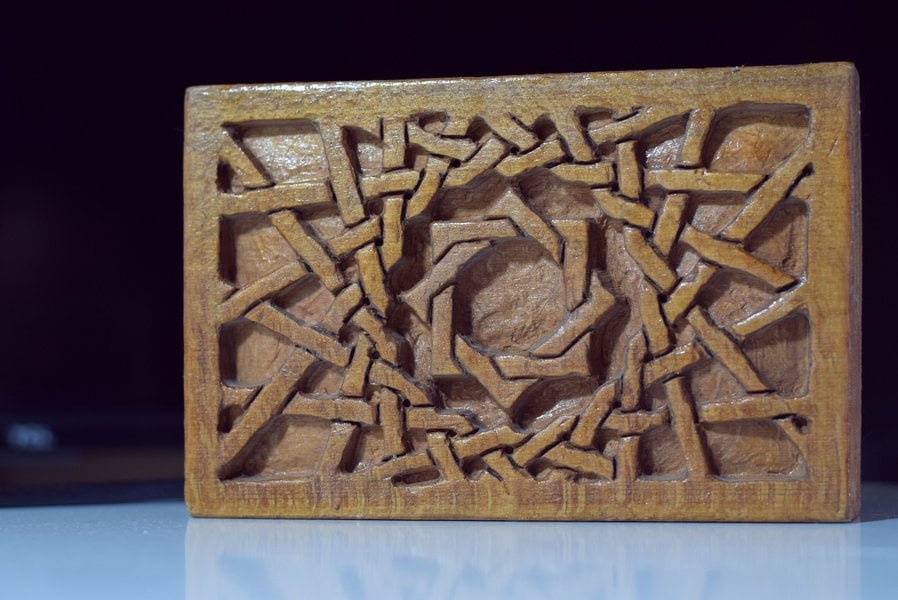
Before Bassem started doing artworks, he tried wood sculpting. It wasn't an easy experience since he didn't have the good tools for it. He tried to sculpt several wood pieces and didn't reach the result that satisfied him.
Bassem tried on 11 wood pieces, but one of them was emotionally valuable to him. One day, he decided to go to Mina to seek carpenters and buy small wood planks. He was given three. He then went back home and drew a geometrical shape on one of them and started sculpting.
This wooden art piece never leaves Bassem's Studio.
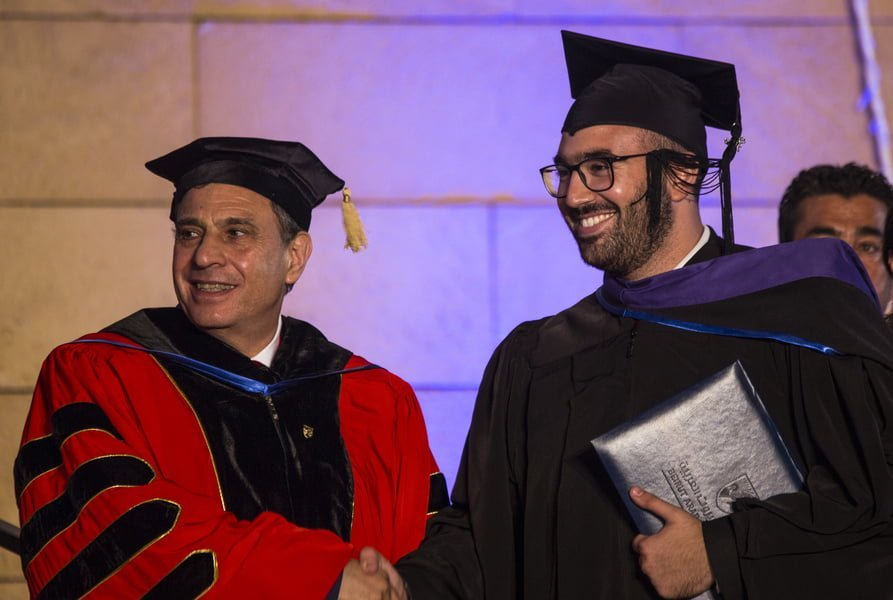
In 2016, Bassem was in his senior architectural year. The fifth year in this major is the hardest since the architecture student should present a final year project which will be determining if this student deserves to be a licensed architect.
Bassem had an idea to create his first artwork, but due to submissions he wasn't able to start until he finished his final year jury.
After several sleepless nights, all his classmates went home to sleep while Bassem bought geometry tools and started his first artwork.
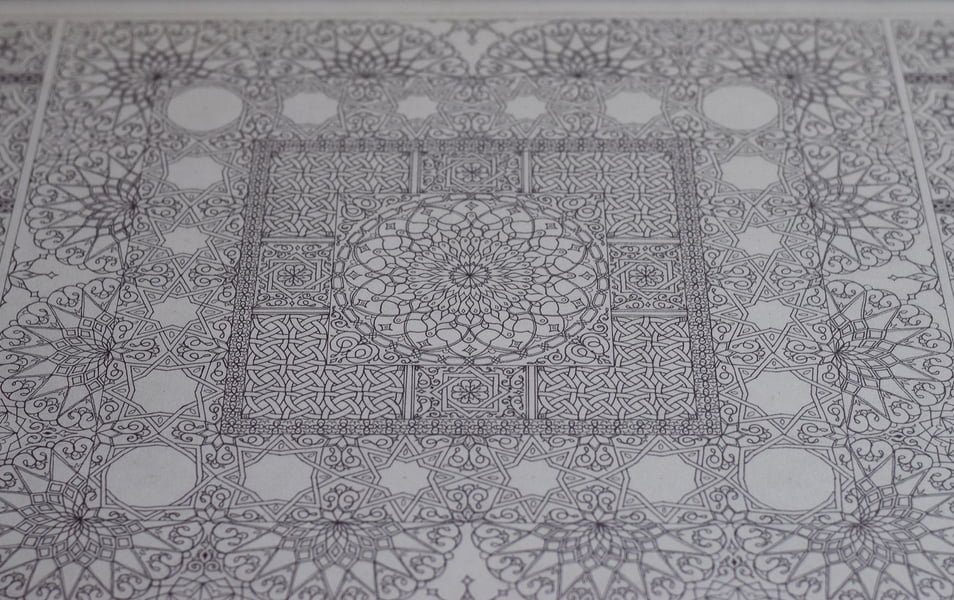
The artwork was in black and white, reflecting the sketches that he used to do on notebooks but in a more organized procedure and using tools.
The paper was 70x50 cm, so he started working on the center, then drawing the surrounding until reaching the edge of the paper. When he found that there's some space in the upper and lower parts, he filled them with more drawings.
After several days, his first artwork was made. A framed artwork influenced by Islamic geometry. This artwork never leaves Bassem's studio.
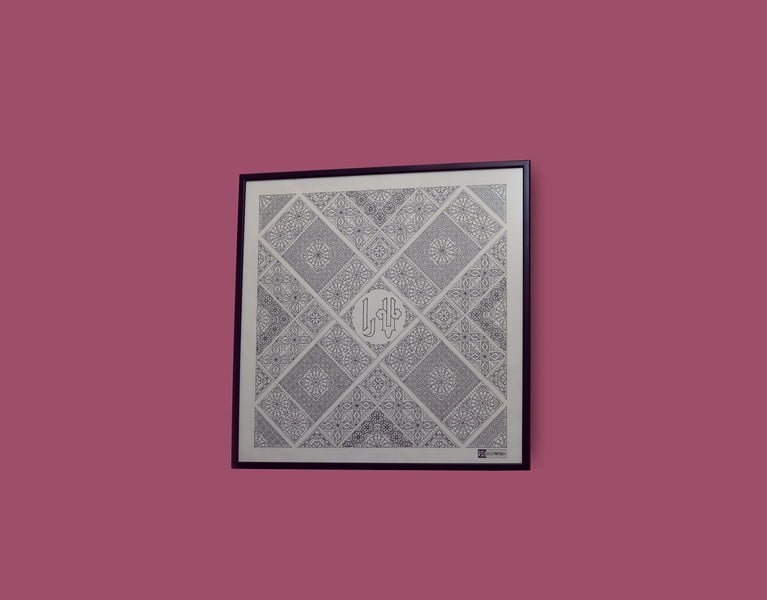
After finalizing his first artwork, Bassem had no experience how to frame an artwork. He was told about a small aluminum workshop where they also create wooden frame.
After framing it, and while his sister's birthday was coming up, he had the idea of making her an artwork with its name in the center as a birthday gift.
With no experience in calligraphy, he chose to use "kufi" because it's a geometrical calligraphy which could be done easily.
The artwork was also in black, using floral and geometrical shapes invented by him.
After posting a photo of the artwork on facebook, a friend called requesting an artwork for himself.
And that's how it started.
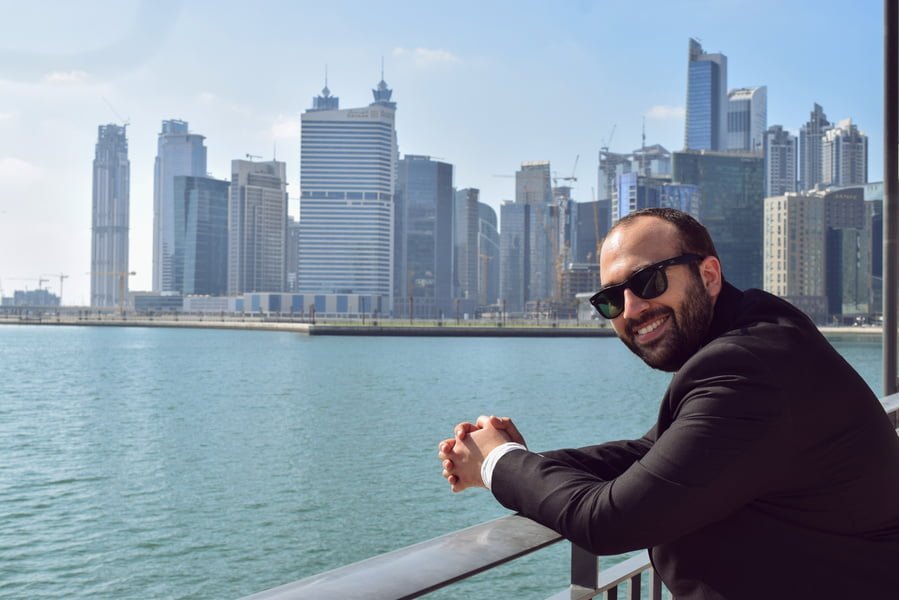
After graduating, Bassem was called to work for an engineering company. He was the only architect there among civil engineers.
After work he goes back home and works on improving his skills in Islamic Art until night. He bought books, analyzed the patterns and executed them on his computer. He didn't design patterns at first and used the ones he found.
He spent a minimum of five hours a day working on self-learning this art while doing a minimum amount of artworks which were simple and had no colors.

Bassem had the chance to particitpate in several art galleries while his artworks were still simple and modestly colored.
The first gallery was during his university years, then he participated in an art exhibition in Safadi Center and the last two were in Tripoli's chamber of commerce.
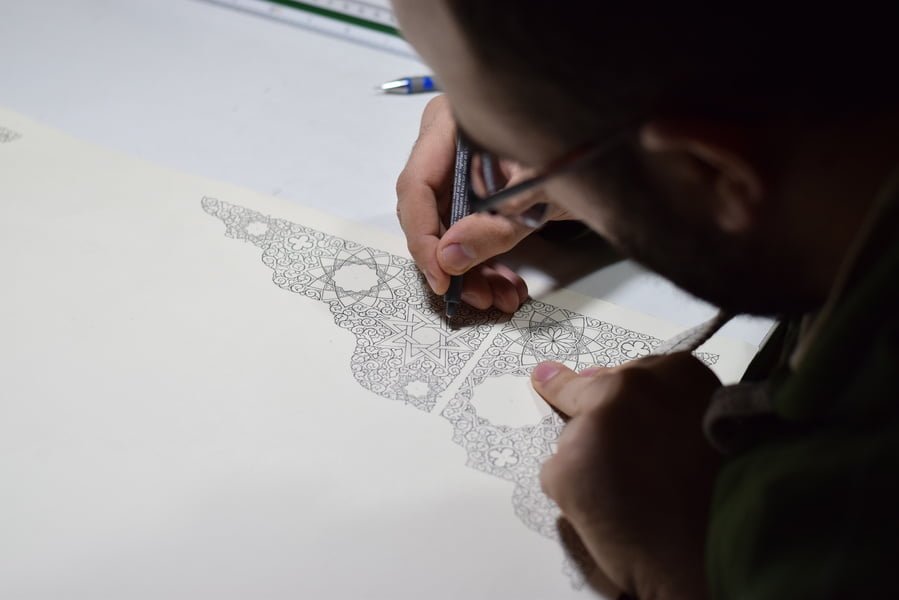
Each artwork teaches Bassem a new technique, style and method in the world of arts.
People started advising Bassem to start using colors, the first color attempts were not very successful; He was not really experienced in acrylic coloring.
Bassem also thought arabesque alone would make the artwork simple and adding calligraphy would make it look nicer. This pushed him to learn and practice the art of "Kufi murabaa", this charming ancient geometrical style of calligraphy.
Bassem then made his beloved artwork in blue and mint green which never leaves the wall of his studio.

After working for three years, Bassem hated being an employee. One day he decided to take a risky decision in a time his friends were desperately searching for jobs. He decided to quit his job.
One day he had the chance to work on the restoration of Khan al Massriyin , a seven hundred years old Khan in Tripoli, Lebanon, alongside Mr. Frank Keller, a Swiss person who was interested in restoring the khan.
This new project, his love to history and heritage buildings pushed him to be specialized in restoration of historical monuments by getting a master's degree from the Lebanese University.
During his studies, Bassem learned the importance of documentation. This lead him to the idea of documenting the islamic art patterns of the city of Tripoli, a rich seven hundred years old heritage.
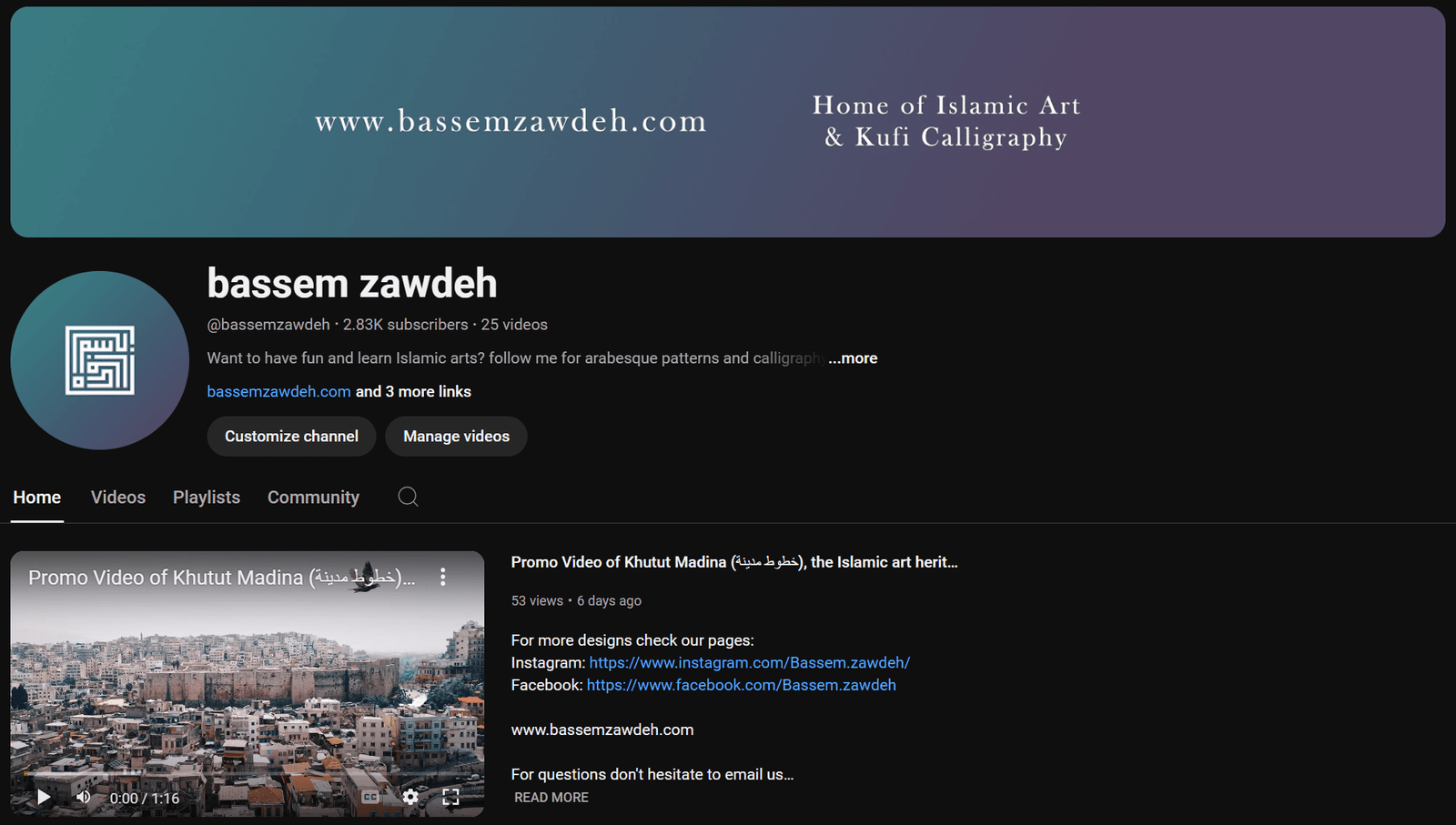
During COVID, Bassem decided to upload several tutorial videos on YouTube for people in their quarantine. The videos were fun and still being watched until nowadays.
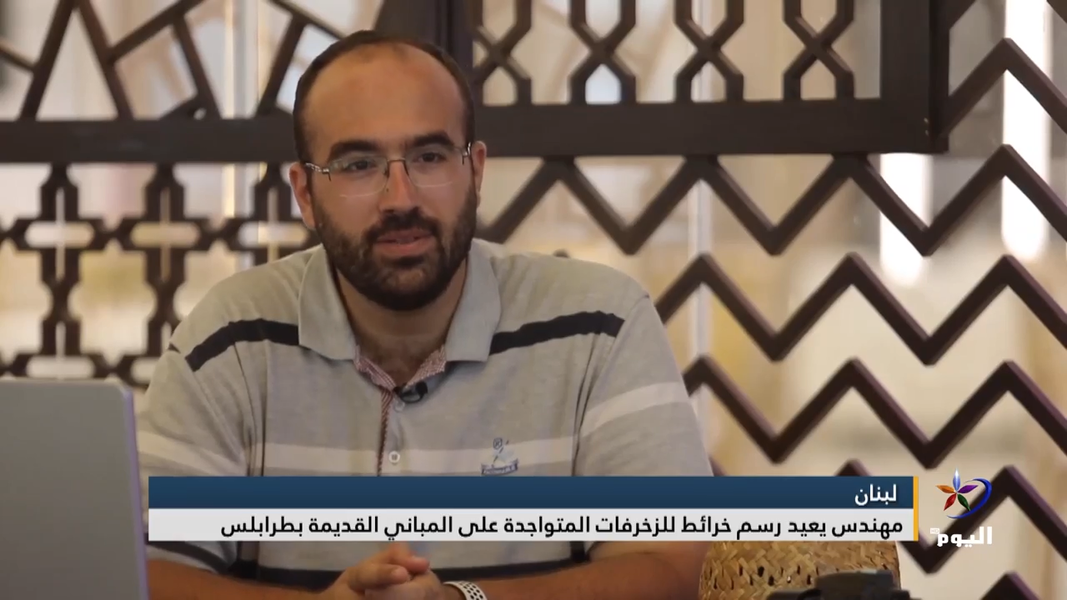
The episode started with showing Bassem waking in the narrow streets of Tripoli with his camera and ended with an interview.
Bassem participated in Tripoli's Startup Forum organized by TEC "Tripoli Entrepreneurs Club", pitching his work in Art and Architecture.
After the presentations, businesses from Lebanon exhibited their work and services. Bassem had the chance to exhibit some of the artworks he got. He also had to bring some artworks he did, owned by some friends to have a variety of paintings.
In the end of the event, Bassem was elected the best presenting idea and earned the highest prize.
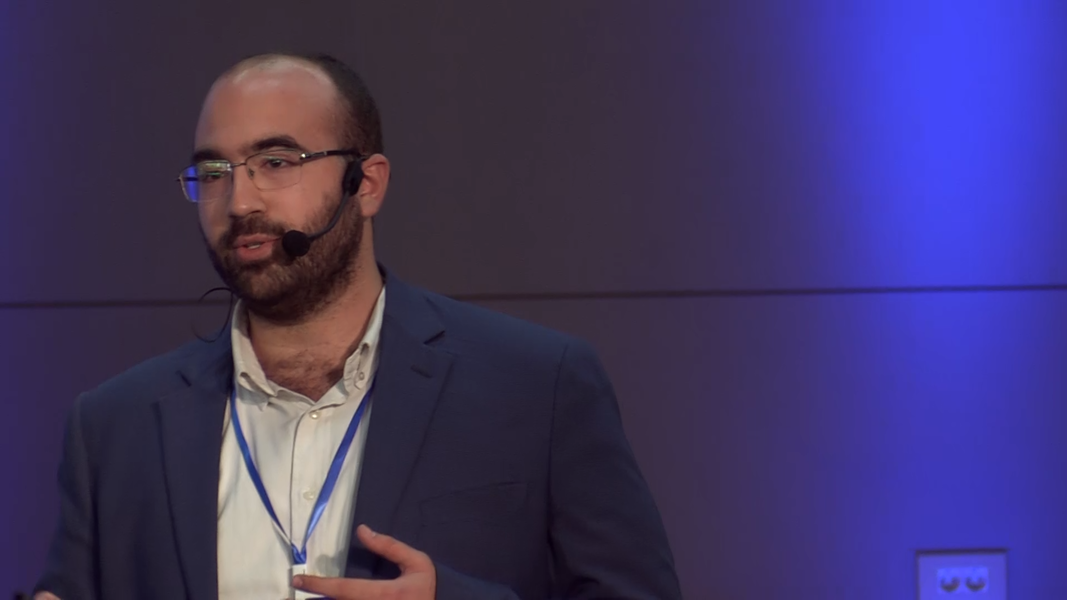
Bassem participated in Tripoli's Startup Forum organized by TEC "Tripoli Entrepreneurs Club", pitching his work in Art and Architecture.
After the presentations, businesses from Lebanon exhibited their work and services. Bassem had the chance to exhibit some of the artworks he got. He also had to bring some artworks he did, owned by some friends to have a variety of paintings.
In the end of the event, Bassem was elected the best presenting idea and earned the highest prize.
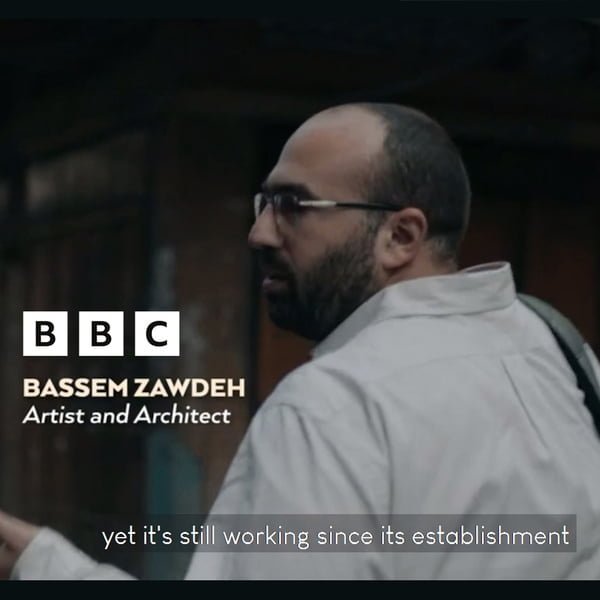
After finalizing the project he started in 2020, Bassem has met George Henton, a director working for the BBC who was interested in doing a video about Bassem's project and his work in Islamic Arts.
The video needed three days of shooting and several days for post production.
It was published on the 23rd of April 2022.

May 2022
A HOBBY TO A COMPANY
“I’m not telling you it’s going to be easy- I’m telling you it’s going to be worth it.” – Art Williams
In May 2022, Bassem created his own registered company under the name of “Three Fold Studio”, consultant in Architecture, Restoration and Islamic Art.
That’s how www.bassemzawdeh.com was formed to be the world’s only platform for Islamic art and Kufi calligraphy, where Bassem could share his designs with the world!
هَذَا مِنْ فَضْلِ رَبِّي لِيَبْلُوَنِي أَأَشْكُرُ أَمْ أَكْفُرُ

Social Networks
Contacts
- Tripoli, North Lebanon
- +961 70 539 936
- info@bassemzawdeh.com
